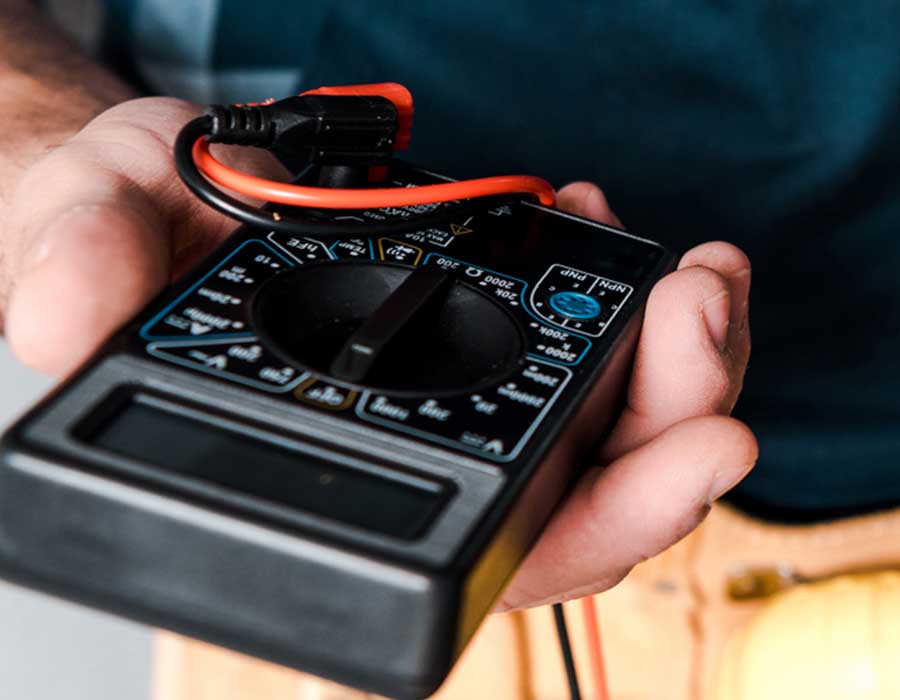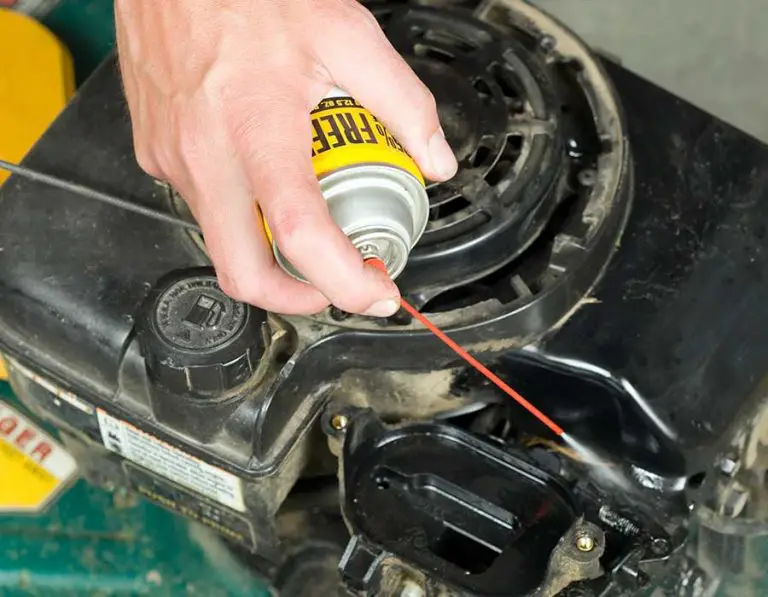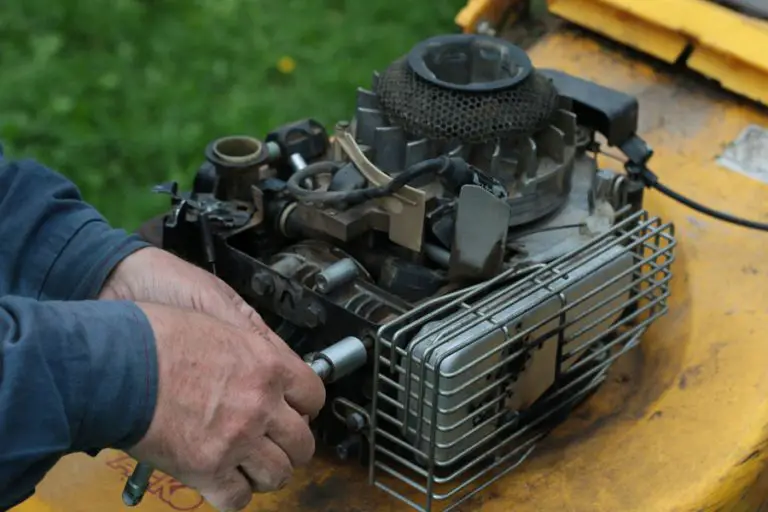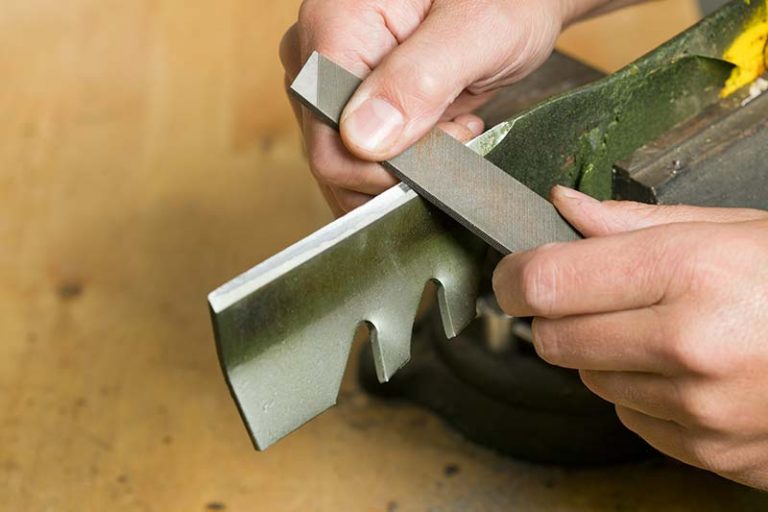A Step By Step Guide: How To Test A Lawn Mower Coil With A Multimeter
A lawnmower coil maintains the voltage to keep the lawnmower running. The coil works alongside the spark plug to produce high voltage and, as a result, a spark. The ignition coil powers the spark plug. One of the signs of a faulty ignition coil is when the lawnmower won’t start. To diagnose the ignition coil, you need a multimeter.
To test the ignition coil using a multimeter, set the device to the correct resistance mode, then attach one end to the spark plug cap. The other end goes into the base of the ignition coil. The reading on the multimeter should be noted and compared to the expected readings. This test will determine whether you need to replace the coil or not. The steps to using the multimeter will be explained further in this article.
What Are The Signs Of A Faulty Coil?
Here are common signs of a faulty ignition coil:
- Engine misfiring
- Difficulty in starting or no start at all
- Sudden backfiring
- Poor fuel mileage
- Sluggish acceleration
Engine Misfiring: A faulty ignition coil will make the engine misfire or make a sputtering sound as it moves. This can cause the mower to operate roughly or vibrate.
Difficulty in starting or not starting at all: The ignition coil supplies voltage to the spark plug, but if it is bad, it will not receive voltage, or even produce the spark for the combustion process. This makes the lawnmower not respond or delay in starting.
Sudden backfire: This happens when unburned gas escapes the exhaust system. Frequent backfires can lead to a damaged engine.
Poor fuel mileage: Your lawnmower may function as usual, but if you notice a decline in fuel mileage, it may be a sign that the ignition coil is developing problems. This will be an excellent time to test the coil and prevent more damage.
Sluggish acceleration: If, as the operator, you find yourself putting more effort than usual in getting the mower to move or speed up, it is a sign of an underlying problem, most likely with the ignition coil.
What To Check Before Testing The Ignition Coil
Before going in on the coil, there are some components of the lawnmower you should inspect. This can help you relate to the issue properly and identify any underlying problem before it escalates. Some of the critical parts to check are;
Check the oil: Little oil or bad oil can pose potential damage to your lawnmower. Avoid leaving oil for too long in your engine. Check the oil level, and fill if it is empty or too low. If you have oil in the machine, but it is darker in color and has a funny smell, it drains the oil and fills the engine with fresh oil.
Check the filters: Clogged filters- the air and fuel filters that cause the engine not to start because the flow of air-fuel mixture required for combustion is slowed down and inhibited. Both filters sieve out particles or debris from getting into the engine.
Air filters: they are either made of paper or foam. If you observe clogging in your filter, it needs to be cleaned or replaced, depending on the type of air filter. Paper filters are not reusable, so you need to discard the old ones and get a new filter. On the other hand, the foam filter should be washed in detergent or mild soap, appropriately dried, and coated thinly with oil to trap dirt easily.
Fuel filters: the fuel filter makes sure that clean, dirt-free gas gets into the engine. If it is made of metal, use carburetor spray to clean off the dirt and reinstall. Paper and nylon fuel filters should be discarded and a new one installed.
Check the spark plug: Over time the spark plug has carbon and soot build up around the cap and electrodes. The best thing is to replace the spark plug, but some choose to gently scrape off the carbon, clean it with some cleaning fluid, and put it back in place. If the porcelain part is cracked, it must be replaced with a new one.

Step By Step Test On An Ignition Coil Using A Multimeter
You need a multimeter, a wrench, a screwdriver, an engine service manual, and of course, the ignition coil to be tested.
Step 1: Take out the ignition coil
The steps to taking out the ignition coil from the lawnmower are as follows.
- You will find the coil attached to the mower’s flywheel magnet inside the engine.
- Loosen the screws and remove the plastic casing
- Remove the engine cover above the fuel tank, exposing the coil itself
- Remove the high-tension lead from the spark plug, and the spark plug as well
- Using pliers, remove the kill wire connected to the ignition coil
- Take out the coil from the engine for testing
Step 2: Using a multimeter to test the coil
- Set the multimeter to 20k resistance on measurement mode
- In the user manual, find the ignition coil’s resistance/tolerance value table. This table will help you determine if your reading indicates a good coil or not.
- Insert one end of the multimeter to kill the wire terminal of the coil and the other end on the base of the coil.
- Observe the reading on the multimeter and note it
- While one end of the multimeter is inserted into the kill wire terminal of the coil, insert the other end inside the spark plug cap and record the resistance value displayed.
- If the multimeter gives no value at all or values not in range with the value table, the ignition coil is bad and needs a replacement.
How To Install A New Ignition Coil
Before choosing a new coil, note the engine number of your lawnmower, and ask the expert or salesperson to recommend a coil that is compatible with your lawnmower.
Step 1: Install the spark plug
- Connect the kill wire to the terminal of the coil
- Connect the spark plug cap back to the spark plug
- Use a screwdriver to tighten the screws
- Note that the distance from the flywheel to the coil must be 10 points. Use a gauge to keep the distance between the coil and the magnet.
Step 2: Put back the casings
Install the engine cover back in place and the plastic case. Use a screwdriver to tighten the screws, and now you have installed a new ignition coil.
Step 3: Test the lawnmower
After this, the lawnmower should start and work well without any hassle.

How To Test The Spark Plug
You might want to test the spark plug because the signs it gives when faulty are similar to the signs a bad coil gives also. Your spark plug might need testing if:
- Difficulty in starting the lawnmower
- Power loss
- Oil leakage from exhaust or crankcase
- Fuel burns faster than normal
You will need a socket wrench, insulated plier, rag, spark plug socket, and a multimeter to test the spark plug.
The steps for testing are as follows;
Step 1: Disconnect and remove the spark plug
Step 2: Use a clean rag to wipe the spark plug clean
Step 3: Set the multimeter to 10K ohms or more.
Step 4: Place one of the multimeter tips on the spark plug terminal, and place the other tip on the spark plug’s electrode.
Step 5: Observe the reading. You should get a result between 5000 ohms and 15000 ohms for a good spark plug. Otherwise, the spark plug is bad.
Step 6:Install a new spark plug if threading is below par.
FAQs
How long should an ignition coil last?
The average lifespan of an ignition coil is about 100,000 miles of the lawn mower’s coverage.
What happens when an ignition coil goes bad?
When the coil is bad, the engine starts to make sputtering sounds, the lawnmower stops abruptly or needs more effort than usual to operate, there is fuel leakage, and the mower uses up more gas than it should. The engine also misfires, backfires, and stalls when started.
Why does the ignition coil in my mower go bad often?
A recurring issue with the coil’s performance could be worn-out cables and old spark plugs. A worn-out cable produces higher resistance, which melts the coil’s insulation due to the high voltage.
How long should a riding mower last before replacement?
Lawnmowers have a very long life span, and a riding mower could work fine for up to 15 years. If well maintained, the mower can still work for a couple more years.
Is it possible to prevent the ignition coil from failing again?
Yes, you can take preventive measures to protect the coil. This is by maintaining the spark plug properly because it regulates the high voltage. The coil and spark plug work hand in hand for the mower to function well.







